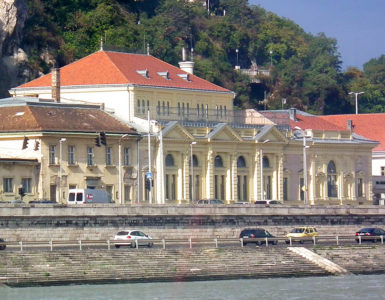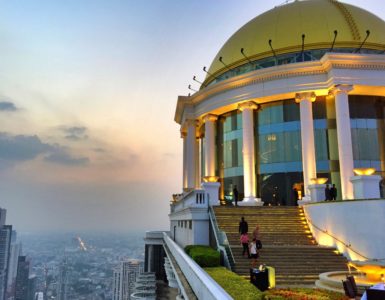Surrounded on all sides by Tampa, Ybor City is currently incarnated as a shopping and entertainment district. If you’re from Atlanta, think of it as a small-scale Atlantic Station, with bars and restaurants stretched along a picturesque avenue instead of being stacked in the shadows of condos and office towers. (Both neighborhoods also share a reputation as being the kind of place you don’t want to be after sunset, unless you’re young or drunk enough to feel invulnerable.)
We were there on a deceptively bright Saturday morning, braving the surprisingly brisk 45-degree weather to take Lonnie Herman’s celebrated Ybor City Walking Tour (currently ranked number 6 or 7 of all attractions in Tampa). After some reflection — and after seeing Lonnie’s photo on the official tour web site — I don’t think we toured with Lonnie at all. (Which may explain, perhaps, why our guide kept referring to himself as “Joe.”)
Right up front: “Joe” knew his Ybor city history, and we learned a great deal about how Ybor City was founded, how it grew to be the heart of the Floridian cigar industry, how it fell into decay following America’s romance with the cigarette, and how it has found new life as a tourist destination. Our tour was packed with anecdotes (some of which — like the assertion that alligators were once as common in Ybor City as squirrels are elsewhere — felt more fanciful than factual), making the experience well worth the $15.00 price.
And yet, I must note that, for a “walking tour,” we did a great deal of standing around. In two hours, we covered just one mile, standing for as long as half an hour at a stretch. Especially on a chilly day, that pushed this tour further from “good” and closer to “grueling.”
Another odd note: the tour is styled as an “historic tour,” and, in fact, we did walk along historic 7th Avenue (which looks a bit like Bourbon Street, if Bourbon Street was lined with palm trees), visit a tight cluster of shotgun homes (once the residences of cigar factory workers), and stand outside an inn, the ornate buildings of Ybor City’s “Mutual Aid Societies (really, ethnic-specific social clubs), and “the world’s largest cigar factory.”
But thanks to Ybor City’s reinvention of itself as an entertainment district (dotted with chain restaurants and a 20-screen multiplex), many stories referred strictly to times gone by, with no historical buildings to serve as anchors for the tales we were told (hence the long stretches spent shivering in the shadows of modern brick buildings).
Odder still: “the world’s largest cigar factory” is now in the hands of the Scientologists. They’ve clearly invested a great deal of money in revitalizing the warehouse and factory, converting it into office space and goodness knows what else. Scientology guards are stationed at certain points around the property, and smartly-dressed Scientologists (always with jangling keys linked to their belts) strolled past us several times. At one point, we spent a good twenty minutes in a courtyard of what is now clearly a compound entirely owned and operated by the Church of Scientology —
— and yet, the tour never mentions the Scientologists, or the role they must have played in preserving the building, or what they’re doing there now. (There were signs touting what I suspect is a perpetual “Open House” and inviting people in. In the hour we spent in the vicinity, no one took the Scientologists up on this offer. There’s something a bit creepy about the place, given that every single window visible from the street was cloaked with light-blocking white window shades.)
We ended up in a cool place — a small patch of land that is actually owned by Cuba; when you’re standing in this little park, you’re no longer in the United States:
Would I recommend the tour? For adults, certainly. Do note, though, that the duration is longer than advertised, and that you might do well to bring a lawn chair along for the trip.





Add comment